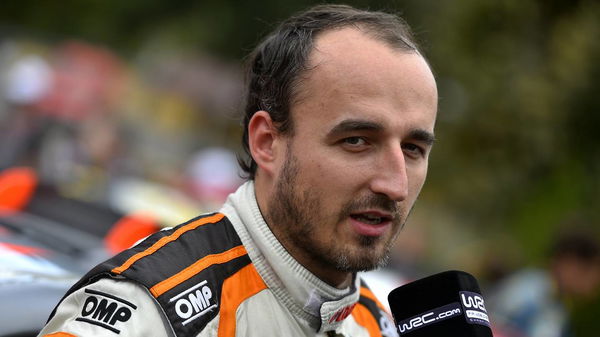
via Imago
Robert Kubica

via Imago
Robert Kubica
After concluding an F1 season, a number of drivers often race in other series to keep their skills sharp. Polish driver Robert Kubica was one of those drivers. He was racing in the Ronde de Andora rally in 2011.
Unfortunately, his car left the road at high speed and hit a crash barrier. It took marshals nearly an hour to extricate him from the wreckage. Now, seven years later, a Polish blog has published the full extent of his injuries.
Black left eye after hitting the steering wheel: healed,
ADVERTISEMENT
Article continues below this ad
A painfully broken right shoulder, fractures with splinters and dislocations: the bones were folded, healed
The humerus – open multiple fractures, bending of the previous titanium plate, inserted after the accident in 2003: the bones were folded, stiffened with titanium rails and connected with screws, cured
Elbow – the most suffered during an accident, repeated fractures with fragments, crushing and dislocations, serious damage to the elbow joint: full elbow reconstruction was performed, broken bones were folded and bonded with titanium elements, it is not known whether the joint will work properly.
On May 9, doctors removed tissue adhesions in the elbow, which means that it is being prepared for the first exercises. The elbow is no longer immobilized, Robert performs rehabilitation exercises to restore his mobility.
On June 15, an operation took place during which the doctors removed the tissue adhesions created during the immobilization period. The last such operation was performed on August 28, after which Robert Kubica is to recover 100% of the hand’s efficiency.
Currently, the mobility of the elbow is already good, but there is a problem with rotation on the elbow-wrist segment. For this purpose, on May 25, the doctors performed the surgery consisting in implantation of two mini-endoprostheses of the radial bone and the humerus.
The elbow joint consists of two articular-brachial joints responsible for bending in the elbow and a tiny radial-brachial joint responsible for rotational movements in the elbow (so-called “turning-turning”), which take place in the dimple of the small radius head in which it rotates a small head of the humerus, and it was in their place that implants were implanted. They are to ensure full mobility of this joint. So far, the operation has not produced such good results as it was assumed.

via Imago
The remains of Kubica’s wrecked Skoda
Wrist – multiple fractures with crushes, dislocations and debris: all bones have been folded and stiffened, correct circulation in the hand and hand temperature have been restored. The scale of neural damage that occurred in the forearm was not given. Probably all nerves were broken. The nerves were in the regeneration phase and probably already work properly. It is able to pick up and lift objects, drive a car.
Lungs – disturbed work after losing a lot of blood, cooling down and shock: their work has been stabilized, cured
Knee – damaged kneecap and joint, fractures, reconstruction of the joint, healed
Tibia and sagittal bones – multiple open fractures with dislocations and debris: bones have been folded and stiffened, healed
Cracked tibia (January 2012) – You can read about the fracture here. Robert’s leg was fitted with an external stabilizer, which is now removed, and Robert is completely normal. Cured.
Heel – damaged heel: healed
Foot – bone fractures: fractures have been set, cured
The entire left side of Kubica’s body has normal mobility.
ADVERTISEMENT
Article continues below this ad
Kubica is able to move on its own, walks without any help, slightly limping.
Overall, Robert Kubica underwent five very serious operations, lasting a total of about 30 hours. A few dozen or so minor treatments were also carried out to improve the titanium fixation of the rails in the right leg, remove tissue adhesions in the elbow, improve limb motility.
The body of the Pole will remain very large scars after the accident and operations. Visible is the lack of a large amount of skin on the outer side of the forearm.
ADVERTISEMENT
Article continues below this ad

via Imago
Kubica, moments before setting off on his run
But now, the Pole has come a long way and is likely to pull off a miraculous return to F1.
ADVERTISEMENT
ADVERTISEMENT
ADVERTISEMENT
ADVERTISEMENT

